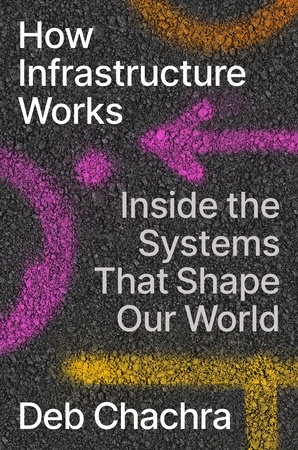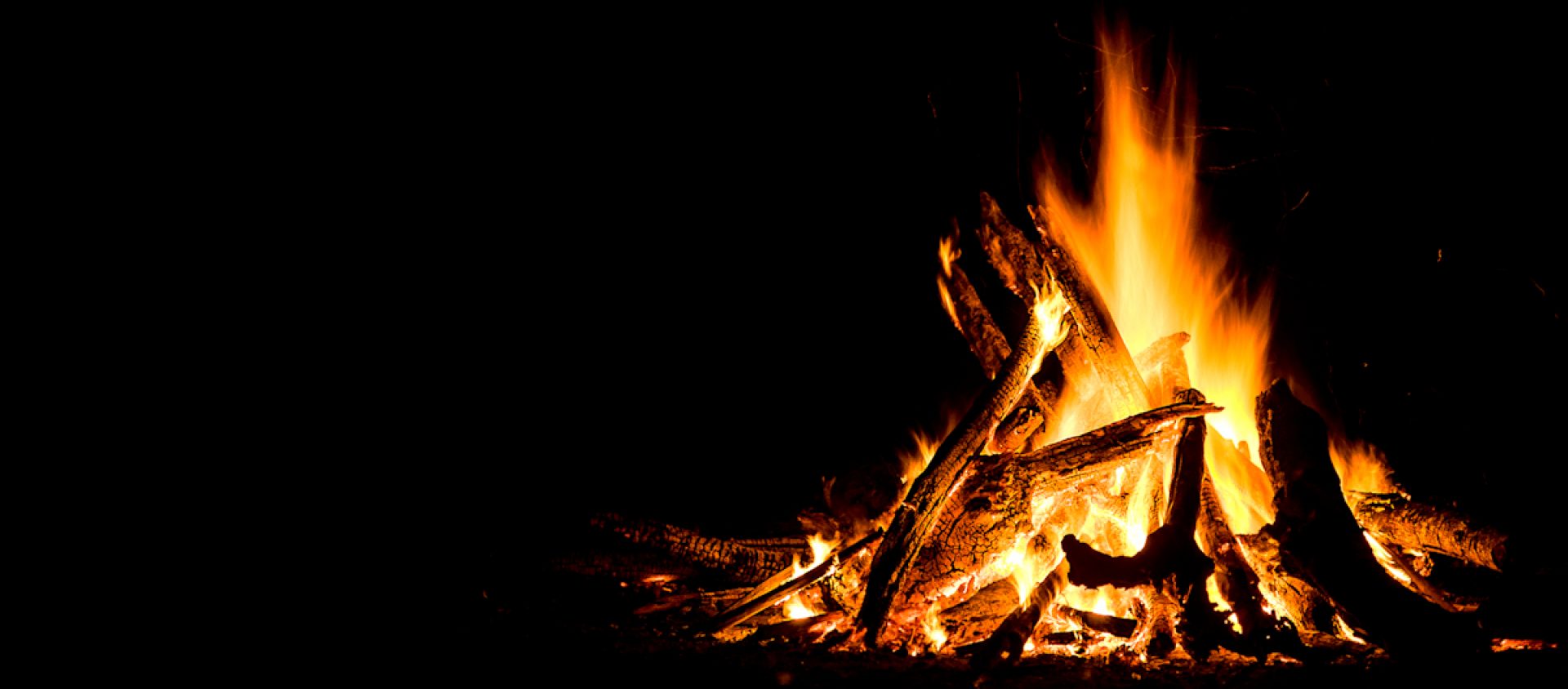
Don’t stop reading! Infrastructure is far from boring, I promise you, especially when the person explaining it to you is Deb Chachra, an engineering professor who both understands how things work and how to explain them. (I’ll just note right here that she has read some science fiction and philosophy along the way.)
The book is called How Infrastructure Works: Inside the Systems that Shape Our World. And no, it’s not a treatise on pipes or wiring or highway construction. It’s an overview of how all those things come together to make modern life possible.
Even if you’ve thought a lot about infrastructure — most of us only think about it when ours fails — this book will give you some deep insights into just how important it is and, even more importantly, how infrastructure design sets in place all our lives.
One of the first things I got from the book is that modern infrastructure is what makes our lives comfortable and possible in the United States and other highly developed countries. We have power at the flick of a switch, water when we turn on a tap, phone service (land lines even still exist, though most of us are using mobile phones these days). The wastewater gets taken away and treated.
Further, we have roads that go everywhere. In some places, we also have other transit options besides cars.
Most of us have access to good food even if we don’t live near where food is grown. That’s due to shipping systems, which also bring us other things we need.
That’s the point: all these things make modern life possible. We don’t have to dig our own wells or fetch water from the nearest creek (if there is one). We don’t have to cut up logs and feed them into a wood burning stove to cook and keep our homes warm. We can be in touch with people all around the world without leaving home or even waiting for the mail (and of course, mail is an infrastructure).
A couple of hundred years ago, people didn’t have most of these things. There were roads and there were shops and some supply systems, but they were not nearly as convenient as they are today.
Despite the fantasy of the “freedom” of living off the grid, the truth is that living in a system with modern infrastructure gives people a great deal more freedom to do something beyond just survival.
Of course, earlier civilizations created infrastructure. The Romans were noted for their roads and their aqueducts. The Hohokam in what is now Arizona created an incredible system of canals and aqueducts in an arid climate more than 800 years ago.
But as we discovered more sources of energy and figured out how to use those to create such things as electricity, we made possible the vast networks of systems we have today. (And yes, we also created some other problems using all those fossil fuels. Don’t worry; Chachra is aware of that as well.)
Here’s another thought about infrastructure, one that we rarely think about: how we decide to put systems together dictates what our lives will be like. So, for example, deciding to build roads designed for cars, including freeways for high speed travel, set up not just our traffic patterns, but also where we decided to build housing and what work systems might look like.
What if we’d built train tracks instead?
This fits in well with the ideas put forth in Jessie Singer’s book There Are No Accidents, which argues that such things as traffic deaths are the result of policy decisions, not actual accidents. You can make roads safe for pedestrians and bicyclists; you can make cars and roads safer in general. But we don’t.
So if you want, say, the 15-minute city where a person can take care of their needs within a 15-minute walk of their home, you build infrastructure to support that. If you want less car traffic, you build transit systems.
But if you build more roads, you’ll just get more traffic. These are decisions.
Infrastructure isn’t a natural system; it’s one we decide on. And if we don’t keep it up, it won’t do its job. Or, as Chachra says, “Any sufficiently advanced negligence is indistinguishable from malice.”
Just ask the people of Jackson, Mississippi, or Flint, Michigan.
We all have plenty of examples of bad infrastructure. And we all know what use of fossil fuels — which is the underpinning of much of our infrastructure — is doing to our planet.
So here’s the part of Chachra’s book that made me very hopeful: renewable energy is a game changer.
As she points out, one of the biggest problems in addressing climate change is that “our infrastructural systems consume energy, and as long as they are primarily powered by fossil fuels, they will continue to be one of the main drivers of climate change.”
She goes on to say:
We’ve created these collective infrastructural systems that make our lives, as we know them, possible. Any future with limited, reduced, or even more frequently interrupted access to them is recognizably worse than our present, if not downright dystopian.
But then, she points out that we can, in fact, change this.
The first step is to break the connection between combustion and energy, to make it possible to generate, distribute, store, and consume energy without producing pollutants.
This isn’t individual change. After all, individual actions aren’t what’s driving greenhouse gas emissions. As Chachra says, “our total energy usage, and therefore the bulk of our emissions, is collective.”
But if we get our energy from something other than fossil fuels, the situation changes:
[I]f we power our infrastructural systems, particularly the electrical grid and transportation … with energy that doesn’t come from fossil fuels, we can decouple our energy footprint and our carbon footprint.
And at this point, we have the technologies to do precisely that.
It’s not going to be easy. We’ll have to replace everything that currently runs on fossil fuels with something that uses electricity – including replacing plants that generate electricity from fossil fuels.
The biggest obstacles are political and the entrenched wealth that goes along with the fossil fuel companies, though there are still some technological challenges.
Here’s her biggest point, the understanding that makes it possible not just to continue to have a decent infrastructure while addressing climate change, but also to make certain that infrastructure is available to everyone: “[R]enewable energy is intrinsically cheaper than fossil fuels.” Sure, you still need a system and maintenance, but the “raw energy input – sunlight, wind running water, the heat of the earth – doesn’t require making a payment to an oil company.”
We can make this shift. We can create infrastructure that serves our needs on this planet without destroying it.
This observation from Chachra sums it up:
I often joke that the only science-fictional future that I personally want to live in is the one where everyone lives a life that is long, cared for, and well provisioned, so that the worst thing that could happen to you before your peaceful death is heartbreak.
Me, too.
